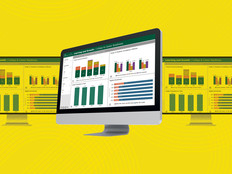Interoperability Boosts the Speed of School Communications
As K–12 institutions digitally progress, slow data sharing between parents, teachers and administrators is leaving all players increasingly frustrated as they are forced to wait for important information sent through what is quickly becoming an outdated system.
Reconfiguring networks to promote interoperability — seamless data sharing — seems to be the best fix for this issue. A 2018 study conducted by the State Educational Technology Directors Association (SETDA) highlights schools in 9 states that have already started to implement interoperable systems with promising results.
Interoperability helps school leaders build better ways to service all important players in their schools by creating a comprehensive network of systems that easily sends data back and forth. It also helps schools reach goals like higher student success, better data analysis, more robust cybersecurity and easier access to education technology, the report’s authors explain.
SIGN UP: Get more news from the EdTech newsletter in your inbox every two weeks!
Transfer Student Data Seamlessly Across Academic Careers
When students transition to a new grade, building or school district, academic data is essential for placing them in classes and creating a profile to track each student’s progress through the year.
SETDA gives the example of “Bobby,” a sophomore in high school who transferred to a new school after his first semester. In his old school, Bobby’s transcript was recorded using a student information system, but the new school uses a different program.
Thanks to policies such as the Common Education Data Standards, information regarding Bobby’s need for special transportation services, food allergy restrictions and appropriate class placements were shared quickly, securely and automatically in time for his first day of class.
This is not just a hypothetical example. Previously signed into law, Utah’s school system now requires all students be assigned “digital backpacks,” which contain a history of student data, including everything from science projects to test results.
Digital backpacks follow students throughout their K–12 academic career, and they can be securely transferred and added to from grade to grade.
A Digital Learning Now report highlights digital backpacks as a solution for teachers who, without these tools, “have little visibility into the past performance of their students, what other teachers noted, or each learner’s strengths, weaknesses, and individual needs.”
Utah teachers are now not only able to keep tabs on how students develop, but they can better develop personalized learning initiatives.
Expand Educational Resources to Student Toolkits
Interoperable networks don’t just allow teachers to share information with each other, but also streamline outside learning tools directly to students.
Schools can use tools such as Learning Registry to collaborate on open educational resources (OERs), pulling content created by educators around the district, purchased, or taken from outside sources.
Learning Registry acts as a large storeroom of educational resources, which teachers can access easily and use to improve lesson plans and inform decisions when experimenting with new learning initiatives.
Georgia’s Total Learning Architecture, a similar project, acts as a hub for students and teachers to access traditional, virtual, personalized and competency-based learning.
Schools can also use interoperable standards to create dashboards, which students can access to keep track of their assignments, collaborate with classmates and plan for their future after graduation, according to the SETDA report.
Find the Tools to Introduce Interoperability
While the interoperable revolution is still in its early stages, there is already a plethora of resources available for schools and states to begin adapting their networks.
The Ed-Fi Alliance offers a set of data standards that outline rules to connect data streams for various school functions, from assignment student data to class scheduling.
The alliance also provides tools to get districts on their way. One example, the Ed-Fi Operational Data Store, provides a way to pull information from different systems into a singular database for easy access and assessment.
Five of the nine states involved in the SETDA report are currently using Ed-Fi resources.
Other initiatives also promote adoption of interoperability. For example, Project Unicorn partners with industry leaders and school systems to develop actionable interoperability solutions and encourage school administrators to take ownership “through informed comparison of vendors.”









